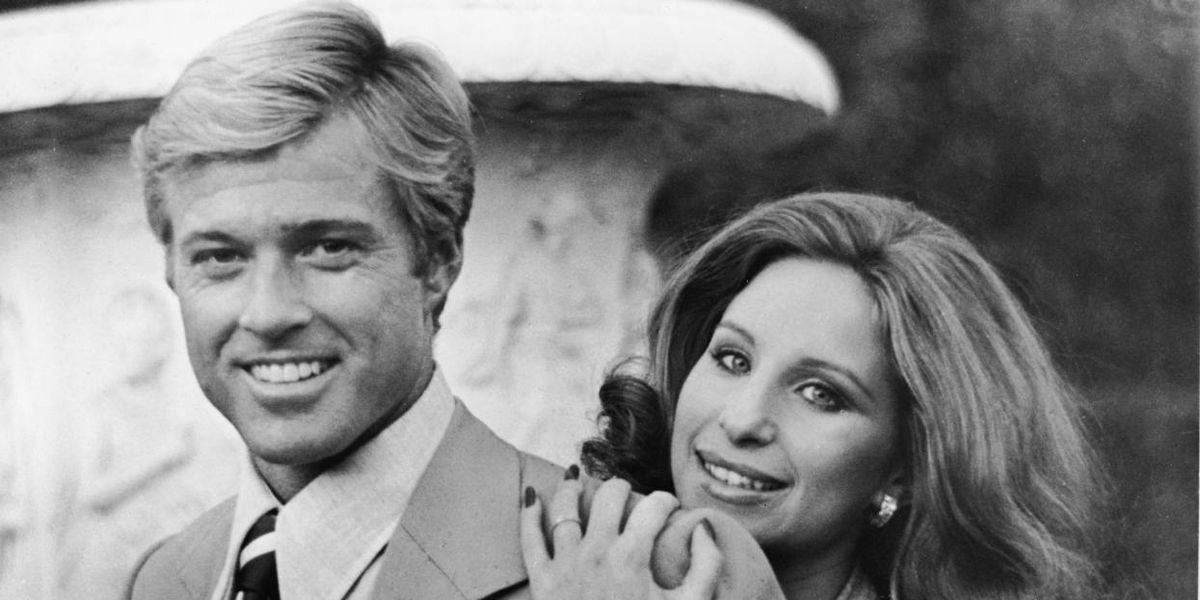The Way We Were’s Secret Gay Backstory
Author: Trudy Ring

As the first few haunting notes of the title song sound and the unmistakable voice of Barbra Streisand intones “mem’ries,” most of us can’t help but settle in for yet another viewing of The Way We Were, even though we know how the turbulent romance of Katie Morosky and Hubbell Gardiner turns out.
But few of us know about the beloved 1973 film’s behind-the-scenes drama or its gay origins. Now a new book, The Way They Were: How Epic Battles and Bruised Egos Brought a Classic Hollywood Love Story to the Screen, written by veteran entertainment journalist Robert Hofler, seeks to bring some light on those subjects to the corners of our minds.
“I was very taken with the movie,” says Hofler, who first saw it on Christmas Eve of 1973, the first Christmas he spent away from home. He was always fascinated by the anti-Communist investigations of Hollywood in the late 1940s and beyond, a key subject of the film, he adds.
As a reporter, he often interviewed Arthur Laurents, the screenwriter of The Way We Were, and Sydney Pollack, its director, about other projects they were involved in, but he usually managed to get in a few questions about The Way We Were, and that yielded a wealth of material for his book. Laurents died in 2011, Pollack in 2008. In other research, he interviewed its two still-living, iconic stars, Streisand and Robert Redford.
The result is a tale of clashes between Laurents, Pollack, and producer Ray Stark, the differing styles of Streisand and Redford, and how a gay Jewish man, Laurents, channeled his love of beautiful Gentile men into the story.
For years, Laurents said the character of Katie, a politically radical Jew who falls in love with and marries apolitical Gentile Hubbell, was based on a woman he knew in college. He had reason to make this statement; in the 1960s and ’70s, gay writers were often criticized for turning their experiences into fictional heterosexual romances. But in his final and posthumously published memoir, 2011’s The Rest of the Story, he admitted that Katie “is mainly me.”
Still, that statement is often ignored, with Turner Classic Movies host Dave Karger and film critic Neal Gabler in recent years repeating the story of Katie being based on Laurents’s college acquaintance. “I find it just bizarre in this day and age,” Hofler says. So he set out to thoroughly explore the gay angle of The Way We Were. “There always has to be a gay angle, or I’m not interested,” says Hofler, a gay man.
He doesn’t think Hubbell is a directly fictionalized version of any of the men Laurents loved, but he does think the character was influenced by the writer’s relationships with some of them, including his longtime partner, Tom Hatcher, and actor Farley Granger.
Hofler was also interested in relationships between Jewish and Gentile men. Pairings of Jewish men and Gentile women — “shiksas” — are often explored in fiction, but stories about Jews in love with Gentile men are less common, he notes.
Laurents had complicated feelings about his Jewish identity. He talked and wrote about fighting anti-Semitism, but he lashed out at anyone who mentioned that his real last name was Levine. And in his research, Hofler consulted the single chapter Laurents wrote of a planned novel that features a Gentile boy humiliating a Jewish one during a sexual encounter. “That was a real Rosebud moment,” says Hofler, a reference movie buffs will understand — the identity of “Rosebud” is the mystery at the heart of Orson Welles’s classic Citizen Kane.
Laurents, best known as author of the books for West Side Story and Gypsy, emerges as a complex man overall. He claimed to have been blacklisted for his left-wing views during the anti-Communist hysteria, but his career wasn’t really threatened. He told counterfactual stories about many other subjects as well. “I found his lies just kind of astounding,” Hofler says. And then there was the touchiness about his name.
Still, Hofler found things to admire about Laurents. “He lived very honestly,” Hofler says, openly with a male partner. Much of his writing is excellent too, Hofler notes.
Not everyone admired Laurents’s writing for The Way We Were, including Pollack and Stark. Laurents wanted it to be more about the anti-Communist witch hunt and blacklist, and some of that remains in the film, but the movie is more focused on the love story of Katie and Hubbell, thanks to some script doctors, and some political scenes were filmed but cut, to the chagrin of Laurents and Streisand. Laurents published his version of the story as a novel, far different from the film.
Hofler says he had wondered what the film would be like with the cut material included, but he concluded it was better off without it: “I have a feeling that the blacklist stuff didn’t work.” The omission of some scenes, though, probably led to Streisand’s desire to direct, he says.
In addition to detailing Laurents’s battles with Pollack and Stark, the book reveals the very different approaches to acting of Streisand and Redford. Streisand agonized over details and called Pollack most nights to hash over the day’s work. Redford valued spontaneity, appeared nonchalant, and even seemed unprepared when he arrived on the set — but then he would nail each scene on the first take. Yet the stars mostly got along well, Hofler reports.
While not everyone else did, a well-loved film emerged from the clashes. Yes, it featured “big talent and even bigger egos,” Hofler writes in his book, but he adds that’s why, “ultimately, the movie became a Hollywood classic.”
Original Article on The Advocate
Author: Trudy Ring



